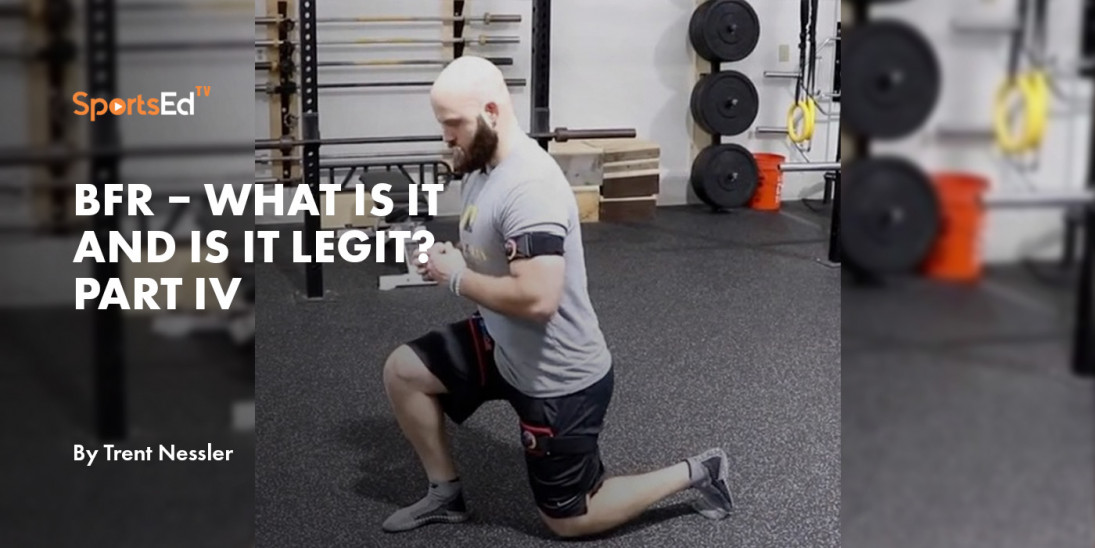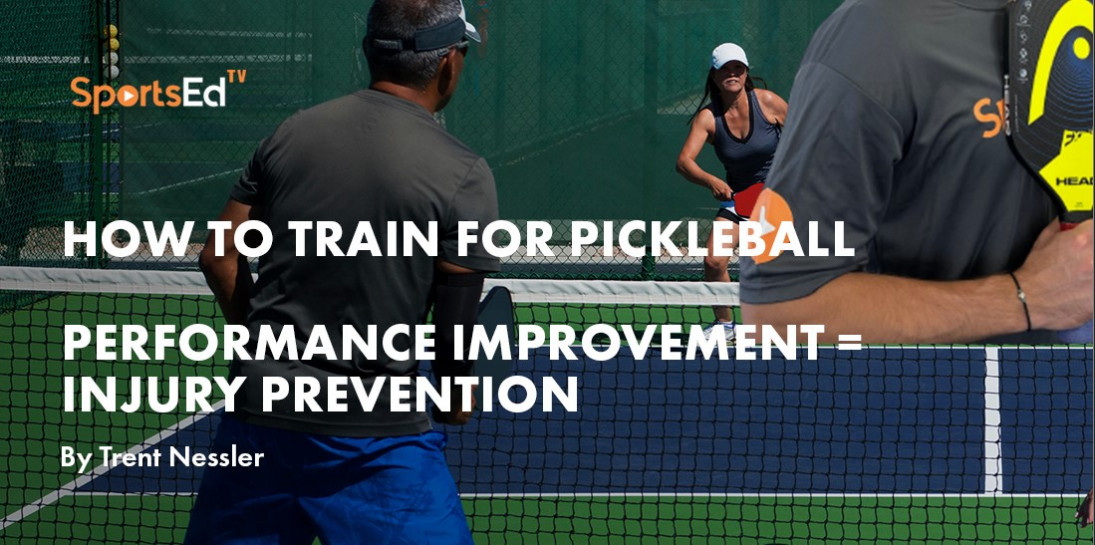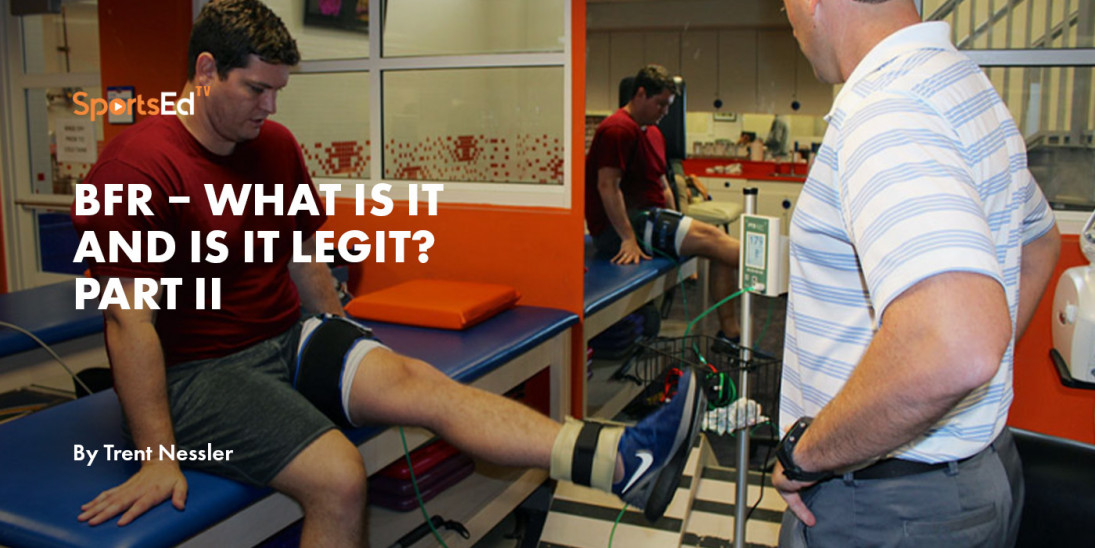Health
Welcome and thanks for visiting...

BFR – What Is It and Is It Legit? Part IV

Over the last two blogs, we discussed some specific research as it relates to BFR (blood flow restriction) training and the impact on common performance measures used in sports. In the last blog, we gave some specific protocols for how you can use BFR for both training for strength/size gains and how you can use it for cardiovascular training. As discussed in previous blogs, ACL is a common sports injury experienced by athletes and seen by coaches. One huge problem with ACL reconstruction rehabilitation is residual quadriceps weakness that is commonly experienced. Common enough that it has become a focus of some research. Studies show if there is residual weakness of the quadriceps after an ACL reconstruction this will result in movement patterns which place the athlete at greater risk of injury or reinjury with return to sport (Ho et al J Physio 2015, Smith et al Am J Sport Med 2015). Despite having comprehensive ACL rehabilitation, these weaknesses and movement patterns often remain at 9 months, 12 months and 24 months post op (King et al Am J Sport Med 2019, Ithurburn et al Am J Sport Med 2019, Curran et al Am J Sport Med 2020). If these are still present as an athlete returns to sport, then this can increase their risk significantly of reinjury with return to play and altered athletic performance. So obviously, this should be a major focus of rehabilitation, restoration of baseline quadriceps strength.
Aside from the study mentioned last week (Wortman et al Am J Sport Med 2020), there are other studies that show that the application of BFR in rehabilitation can result in both an increase in muscle strength and limb circumference (Bowman et al Sport Health 2019). It would make sense then that this should be a part of your ACL rehabilitation. As an athlete and coach, this is something you should be looking for as part of the care the health care provider is providing throughout this process. For those truly specializing in ACL reconstruction rehabilitation, know the importance and make this a part of the process. However, since this is so new to the rehabilitation industry (been used since 2014….which then is not so new), many professionals (PTs and ATCs) are still confused how to use BFR as a part of rehabilitation.
Typically, we start BFR in the 2nd week post operatively. In a traditional setting, at this stage, we are doing some basic quad sets as well as other things to get the athlete to activate their distal quadriceps. With the addition of BFR, we can do 20% of what we would typically do for resistance and facilitate a much greater contraction than what we would get with traditional rehab. When BFR is combined in addition to electrical stimulation (another common technique in rehab) this provides even better results. One big misconception of BFR is that this is only something that is used in the early stages of rehabilitation. In actuality, this should be carried through to all stages of rehab and even in the end stages where you are doing this as a part of your performance training.
Aside from using this as a part of ACL reconstruction rehabilitation, this should be and can be used as a part of your ACL injury prevention program. Knowing the fatigue this creates with low loads, you could easily put this as a part of your end of practice routine focusing on quadriceps strengthening and single leg activities. We have not only found this to be extremely challenging but also very beneficial at mitigating risk for injury and driving an improved performance especially at the end of the game. Training at the end of a practice brings a higher level of fatigue into the training and from the exercise physiology principle of specificity, we know if we train in a fatigued state this is much more likely to carry over to how you perform in a fatigued state.
One case example I will share is a 40-year-old male competitive Brazilian Jiu Jitsu athlete. He is a black belt, 220 lbs, been a BJJ/MMA athlete (with a pro-MMA career). He is also a weightlifter and been lifting majority of his lifetime. At 220 lbs, he is very fit with low percentage of body fat. He ruptured his right biceps due to arm bar. The complete rupture occurred at the distal insertion near the elbow. This was quickly diagnosed, and he had surgery within 5 days of the initial injury. This is typically a 6-9 months to return to MMA without restriction. BFR was incorporated into his rehab at the three-week mark. This was included with upper extremity, shoulder and upper body strengthening. Each training session would include different exercises but would not exceed 3-4 exercises with 4 sets per exercises (using the sequence we previously described). Due to both the systemic effect (increased GH, IGF-1 and myostatin suppression) and localized effect (increased motor unit recruitment) this resulted in:
- Expedited healing and bony integration of the distal biceps anchor
- Increased strength of the distal biceps tendon
- Increased girth and strength of the biceps
- Expedited return to sport
In this scenario, the athlete was back on the mats and 3 ½ months. At 4 ½ months, he was full return to sport without restriction (able to avoid and resist arm bars). Now this is just one example but a great example using an older athlete, a serious injury and able to return to combat sports without restriction in 3-4 months ahead of schedule. More importantly, it should give you an idea of the true effectiveness of BFR.
I hope you found this series worthwhile and more importantly get you looking into BFR for both your performance training and rehabilitation. Stay Tuned next week!
Dr. Nessler is a practicing physical therapist with over 23 years sports medicine clinical experience. He is a nationally recognized expert in the area of athletic movement assessment and injury prevention. He is the founder | developer of the ViPerform AMI, ViPerform AMI RTPlay, the ACL Play It Safe Program, Run Safe Program, author of a college textbook on this subject and published researcher. Trent has performed >5000 athletic movement assessments in the US and abroad. He is the President of Rebound Vitality providing injury prevention services for the tactical athlete and movement consultant for numerous colleges and professional teams. Trent also a Brazilian Jiu Jitsu purple belt and complete BJJ/MMA junkie. Follow Dr. Nessler on Instagram @ BJJPT_ACL_GUY or Twitter @ ACL_prevention. www.drtrentnessler.com
Read more:
BFR – What Is It and Is It Legit?




